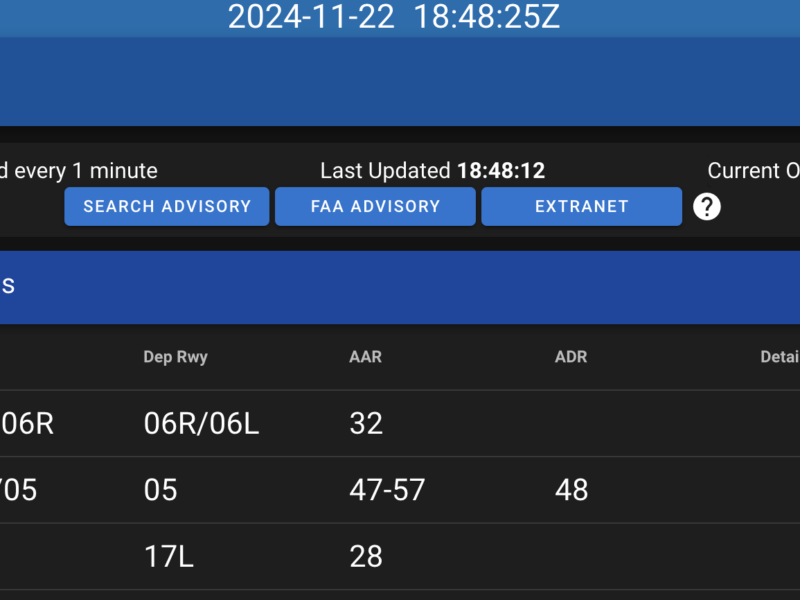Today was a perfect day for flying. The temperature was a little on the chilly side (-10°C or so). I was afraid that the wind would be too strong, but it didn’t play a factor.
Today was a lot of first for me:
– First time I did the walk around my self (with FI observing)
– First time doing the run up and pre-take off checklists my self (with FI observing)
– First time I actually flew in the circuit (well, I sorta did it in my intro flight).
– First time trying to figure out where the hell we are using my map
I made a mock radio call to ground. Got most of it right:
FI: “Ok, we’re ready to taxi, what do you say to ground”
Me: “uhmm.. ‘Buttonville Ground this is Cessna foxtrot alpha kilo echo requesting taxi clearance'”.
FI: “good, except just drop off the Requesting taxi clearance bit and add which ATIS ident we have”
I need to memorize the frequencies. I remember ATIS, but not Ground or Tower :(
I taxied to runway 33. I stopped my self short of reaching for the yoke to try to steer the plane… gotta get those feet moving.
The FI took off and we headed to the north. We have to stay below 2500′ feet until we are cleared of Buttonville’s zone. We started our work when we got to the practice area.
Today was about descents and climbs again, but this time… doing them properly. Combining power, attitude, and trim in their proper order. This is where I was a little unprepared. I forgot to memorize the V speeds! These are important to know so that you can put the plane in a best angle or best rate attitude. For climbs:
Attitude
Pitch the airplane into the attitude you want for the type of climb. Match up the “picture” you see outside with what you should expect would be right angle for the type of climb.
Power
Once the air speed has dropped to Vy (78KIAS) or Vx(64KIAS) apply power to maintain air speed. In most cases, this will be full power in the 172.
Trim
Trim to reduce control pressure
When you are coming out of the climb. Adjust to attitude back to cruise and reduce power as the engine RPMS come up to maintain ~2200rpm.
With descending for best glide the order is a little different:
Power
Reduce power so that our airspeed is around 65KIAS. Make sure you keep that nose up until the speed is bled off!
Attitude
Pitch the nose down. Unlike with a climb where you use power to maintain the airspeed, in a descent you use attitude to maintain speed.
Trim
Trim to eliminate yoke pressure.
Returning from a descent the order is the same. Apply power to bring speed up to cruising speed, then adjust attitude to match.
Things to remember when descending: Since RPMs are going to be low, carb heat should be on. Don’t forget to turn it back off when you return to cruise!
We did some navigation today as well. I have to get used to the fact that we are traveling at 200km/s. I attempted to point out some landmarks on my map and match it with what we saw outside. Little success. On the way back I attempted to point out a suitable place to land for a forced landing.
FI: “So which do you think is a good place to land.”
Me: (pointing) “That field!”
I realized what I did after I said that. There are literally hundreds of different farmers fields out there. D’oh. We turned to the south where there were more landmarks to use as a reference to whatever field I pick. The one I ended up picking wasn’t too bad.
FI: “We miiiiight, be able to make it there.”
So we’re heading back to the airport and I call out some important landmarks to use when requesting clearance into the zone. We are in the circuit, but I still haven’t spotted the airport :( It wasn’t until the downwind leg did I see the runway to the right of us). The FI pointed out landmarks I can use for when it was time to turn to the base leg. I lined us up for the runway, then she landed.
Parking the plane was an adventure… I did better than I thought I would have.
Another 1.4 hours under the belt.


As a Canadian student pilot, your FI is the Chief Flight Instructor of your school. You might be flying with him/her, but more likely you are flying with a flight instructor. The vocabulary is different: don’t be unduly influenced by what you read in American student pilot blogs. The rules and prcedures are different, too.